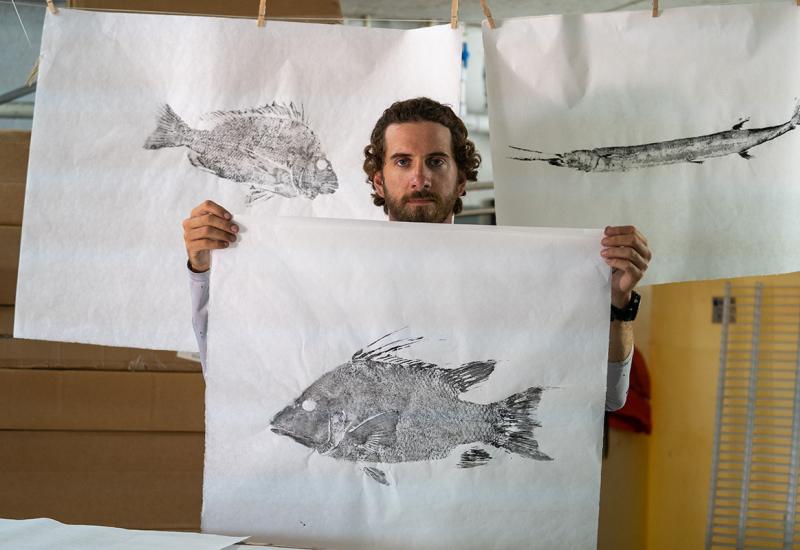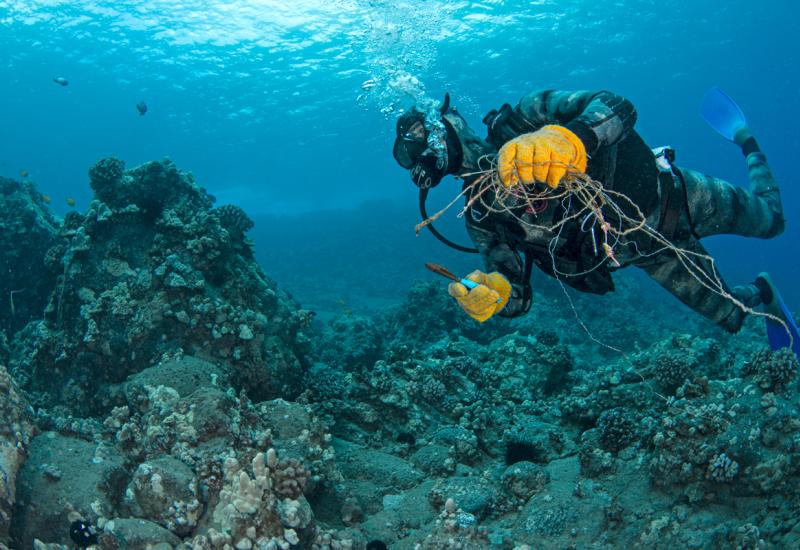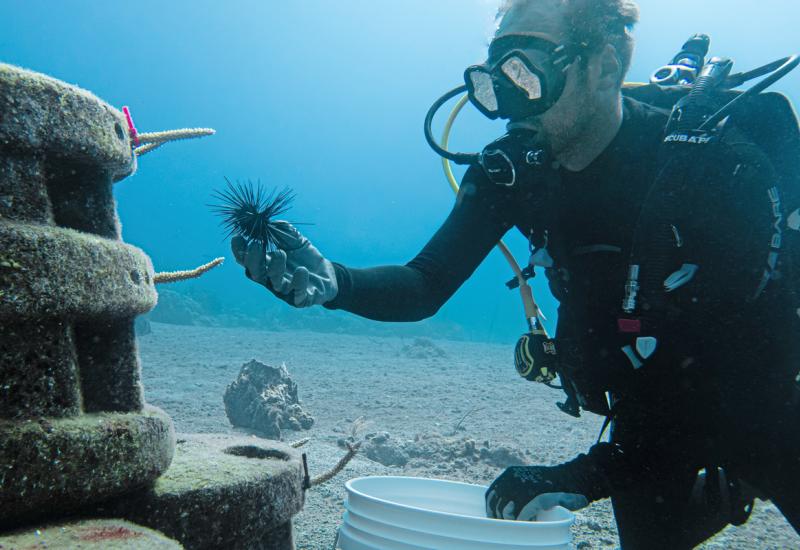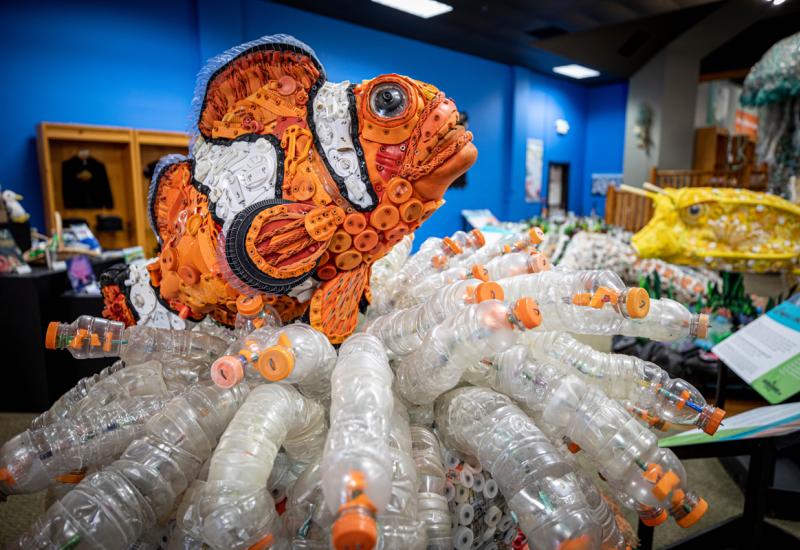Iconic Ocean Animals Are Disappearing. You Can Protect Them — Here’s How.
Marine species, from tiny fish to giant whales, could disappear as scientists say Earth is well into a mass extinction event. Loss of a single species can ripple through a habitat. Lose multiple species, and entire seas transform. Here, we explore six iconic creatures at risk.
Manta Ray
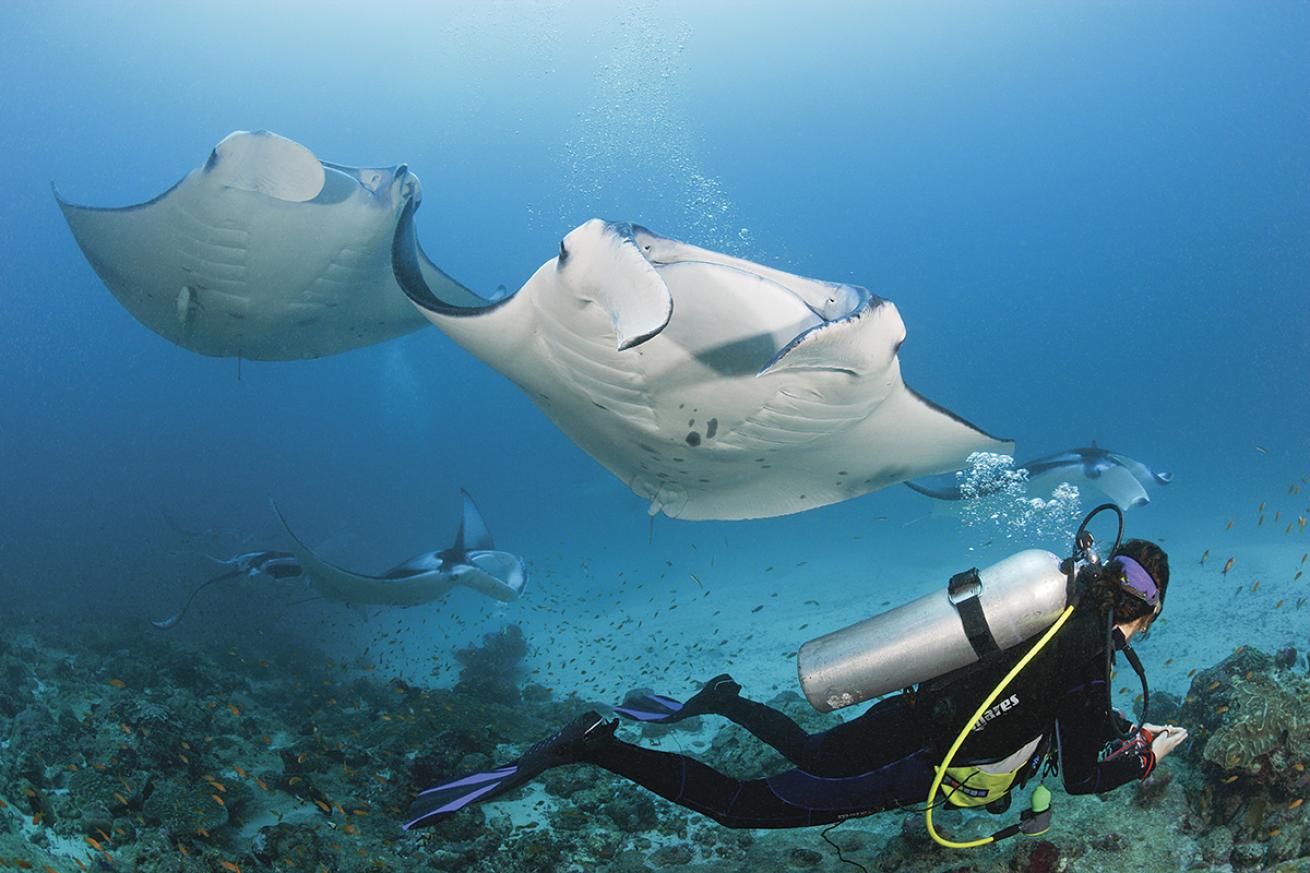
Brandon ColeYour photos of manta rays can help scientists count manta populations.
Using pectoral fins spreading up to 29 feet across, giant manta rays glide like underwater spaceships. Scientists at the Flower Garden Banks National Marine Sanctuary in the Gulf of Mexico have monitored this endangered species for more than 20 years, says research coordinator Emma Hickerson, creating a photo catalog of 99 individuals identified by unique patterns on their undersides.
Biologists at Australia’s Ningaloo Reef, who also created a manta photo catalog, recently realized that scars they thought came from predators were probably from vessel strikes.
“People think of mantas as offshore, deep water animals, but they bask and feed at the surface,” says National Oceanic and Atmospheric Administration (NOAA) biologist Calusa Horn. Boat strike injuries are an increasing threat, as is direct harvest of mantas for their gill rakes, used in traditional Chinese medicine. These filter feeders also ingest large amounts of microplastics, which contain toxic chemicals and keep them from getting adequate nutrition.
Mantas have one of the largest brain-to-body size ratios in the marine world and recognize themselves in mirrors, Horn says. They also often approach divers.
“What a gift it is when they show up and swim by or hang out,” Hickerson says. “They are absolutely aware of you being there. I have had them swim through my bubbles and keep coming back.” She adds that mantas are at the Flower Gardens year-round.
Horn encourages divers to photograph the undersides of mantas and submit them at mantawatch.com or via email at [email protected] to support monitoring efforts. Keep a respectful distance and never touch or chase an animal, she stresses.
Oceanic Whitetip Shark
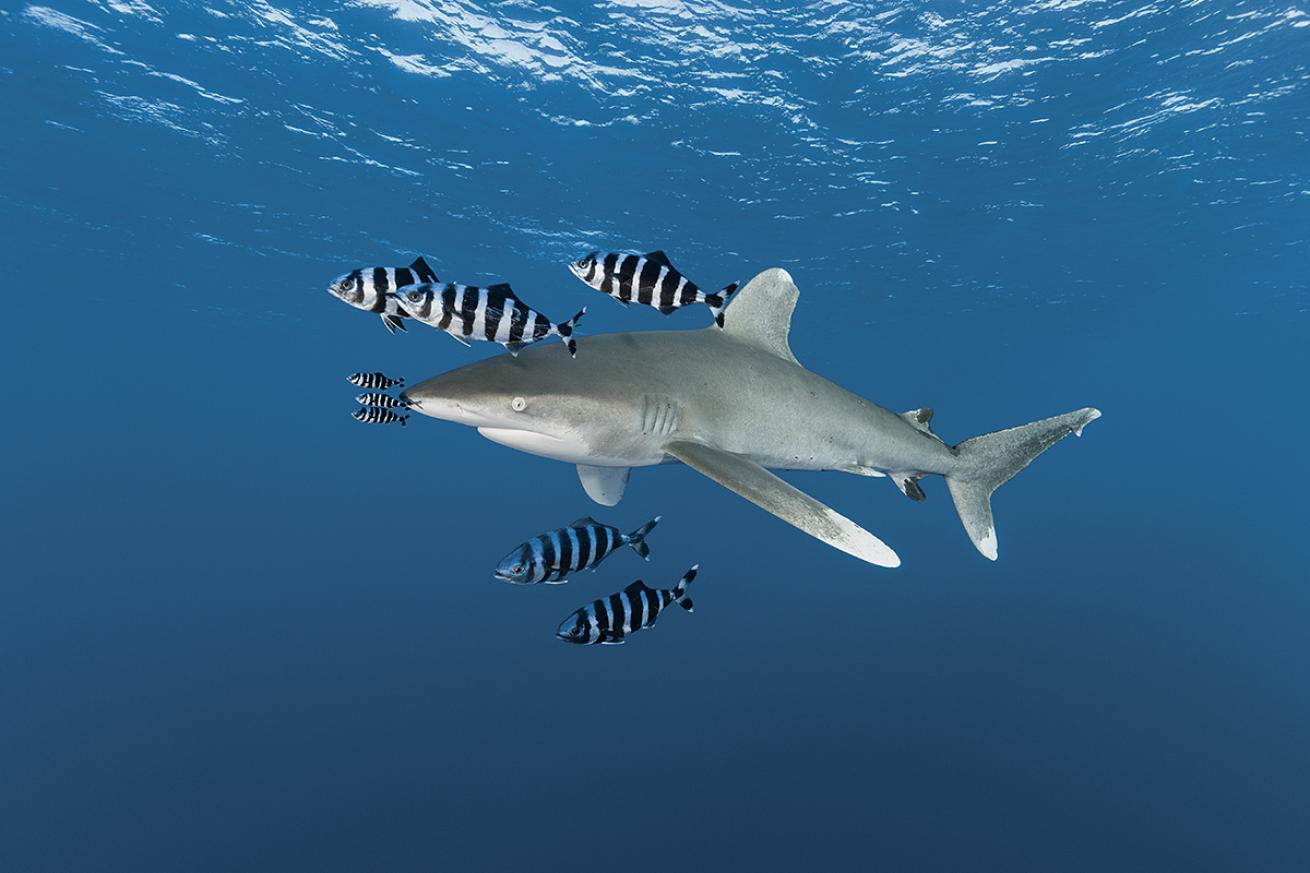
Brandon ColeConservation will require international collaboration, says NOAA’s John Carlson.
Large, rounded pectoral fins like ship stabilizers give these slow-swimming sharks a distinct silhouette—and make them a target for shark finning. NOAA documented declines in the species of 80 to 95 percent across the Pacific Ocean and 88 percent in the Gulf of Mexico due to commercial fishing. In December 2019, the IUCN reclassified oceanic whitetips as critically endangered, a big jump from its previous classification as vulnerable. Sharks play a key role in marine ecosystems, and some coral reefs died when these top predators were fished out. Oceanic whitetips prefer the open ocean, says John Carlson with NOAA’s Southeast Fisheries Science Center Oceanic, but divers see them in places like the Bahamas, where reefs drop off quickly, at Socorro Island in Mexico and around Hawaii.
Off the coast of Haiti, waters reach depths up to 12,000 feet within a mile or two of shore. Recent research suggests that juvenile oceanic whitetips here are offspring of pregnant adult females tagged in the Bahamas. Haitian fishermen who once caught juvenile sharks now release them thanks to outreach by the Haiti Ocean Project. Efforts are underway to establish a shark sanctuary around the island as well.
These sharks often appear curious, circling divers on safety stops, and are one of a few shark species that must swim constantly because they cannot pump water across their gills. Their global distribution means recovery will require a lot of international cooperation, Carlson says. Steps needed include ending shark finning and developing and enforcing better handling and safe release practices.
Hawaiian Monk Seal
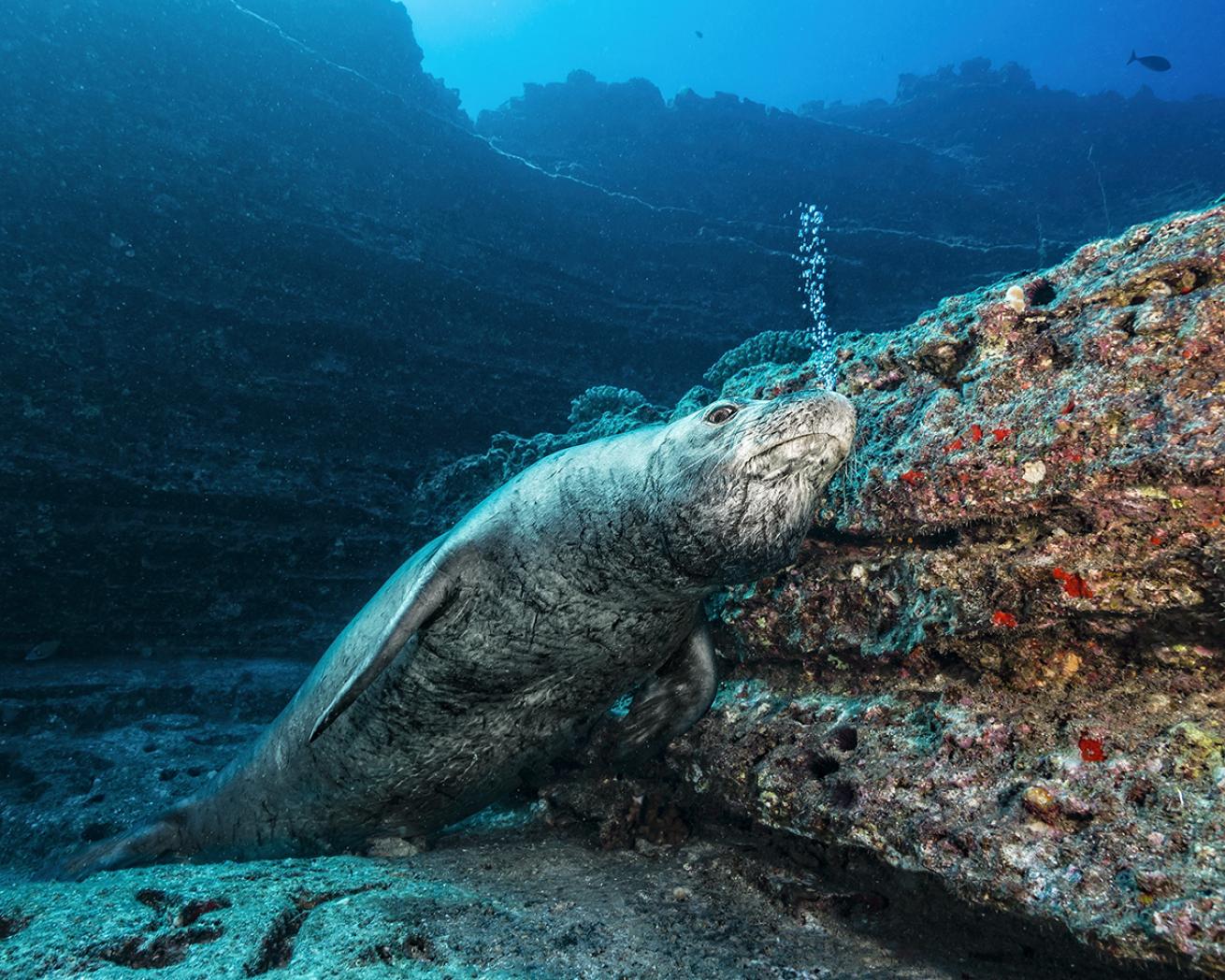
Brandon ColeWhen people interrupt a Hawaiian monk seal sleeping on shore, the animal can struggle to get the rest required to forage.
These seals live in the Hawaiian Islands—the only pinnipeds found in the tropics—and are classified as endangered in the United States; they are listed as critically endangered by the Convention on International Trade in Endangered Species of Wild Fauna and Flora (CITES). Blame climate change, commercial fishing and human disturbance, including people behaving badly around the seals when they “haul out” on beaches in Hawaii.
“When they haul out, it’s no different from you going to bed at night,” says Tim Robinson of the Kauai-based Monk Seal Watch Program. “Every time someone wakes them up, they’re interrupting rest that the animals need to be able to forage.” Diseases also affect the seals; 12 have died from an outbreak of toxoplasmosis, caused by a parasite carried by cats. Marine debris also harms them.
Currently, the population of fewer than 1,500 is trending slowly upward—the main islands saw a record 48 pups born in 2019. But some small islands where the seals pup have shrunk or disappeared due to sea level rise; it remains to be seen whether the animals will shift to other locations.
Divers who encounter these seals should not interact with them, Robinson stresses. “Some are playful and will try to get you to interact, and that can be hard to resist. But it is very dangerous when a seal gets acclimated to humans. Stay still and just appreciate them. Feel free to take pictures and send them to us. And absolutely report sightings to our monk seal sighting hotline,” 808-651-7668.
Hawksbill Sea Turtle
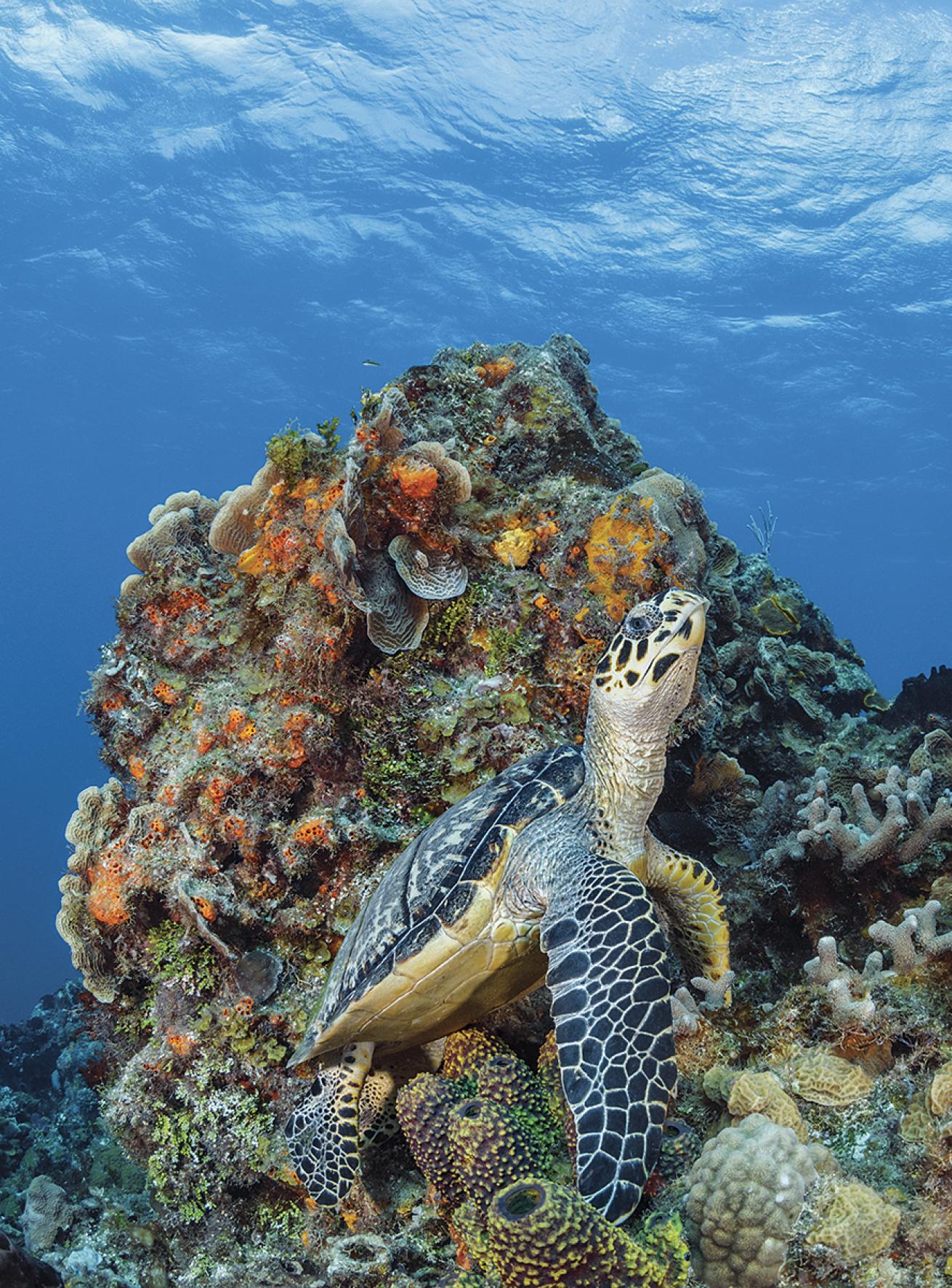
Brandon ColeSouviners made of sea turtle shells can contribute to the decline of this already severely threatened species.
Hawksbills hang around coral reefs, using raptor-like jaws to eat sponges. One hawksbill can consume 1,000 pounds per year, which maintains reef diversity by preventing sponges from overtaking corals.
Scientists estimate the current population at 15,000 to 25,000 females. (Females can be counted when coming ashore to nest; adult males never come ashore.) CITES prohibits most international trade in the species, which is Endangered under the Endangered Species Act and IUCN Critically Endangered thanks to fishing-gear entanglement, sea level rise and harvest for their shells. Research by Monterey Bay Aquarium indicates that some 9 million shells traded hands before it became illegal.
Ten countries still have open sale of shell products, including Nicaragua, Colombia, Costa Rica and Panama, and thousands of products sell online from Indonesia, says Brad Nahill of Too Rare to Wear, a coalition of conservation organizations and tourism companies working to end the shell trade. “The U.S. is the world’s second-largest market for illegal wildlife products. Tourists who purchase them abroad and bring them home probably don’t realize they’re contributing to the decline of a critically endangered species.”
Caribbean hawksbill populations have seen big improvements. Those in the Yucatan and Panama grew tenfold in the past decade as turtles born around the time trade became illegal reached maturity and begin nesting. Too Rare to Wear urges divers to look for alternative souvenirs, including items similar to tortoiseshell but made from plastic, coconut and horn. The organization’s website includes tips on how to spot (and avoid) items made from real shell.
Nassau Grouper
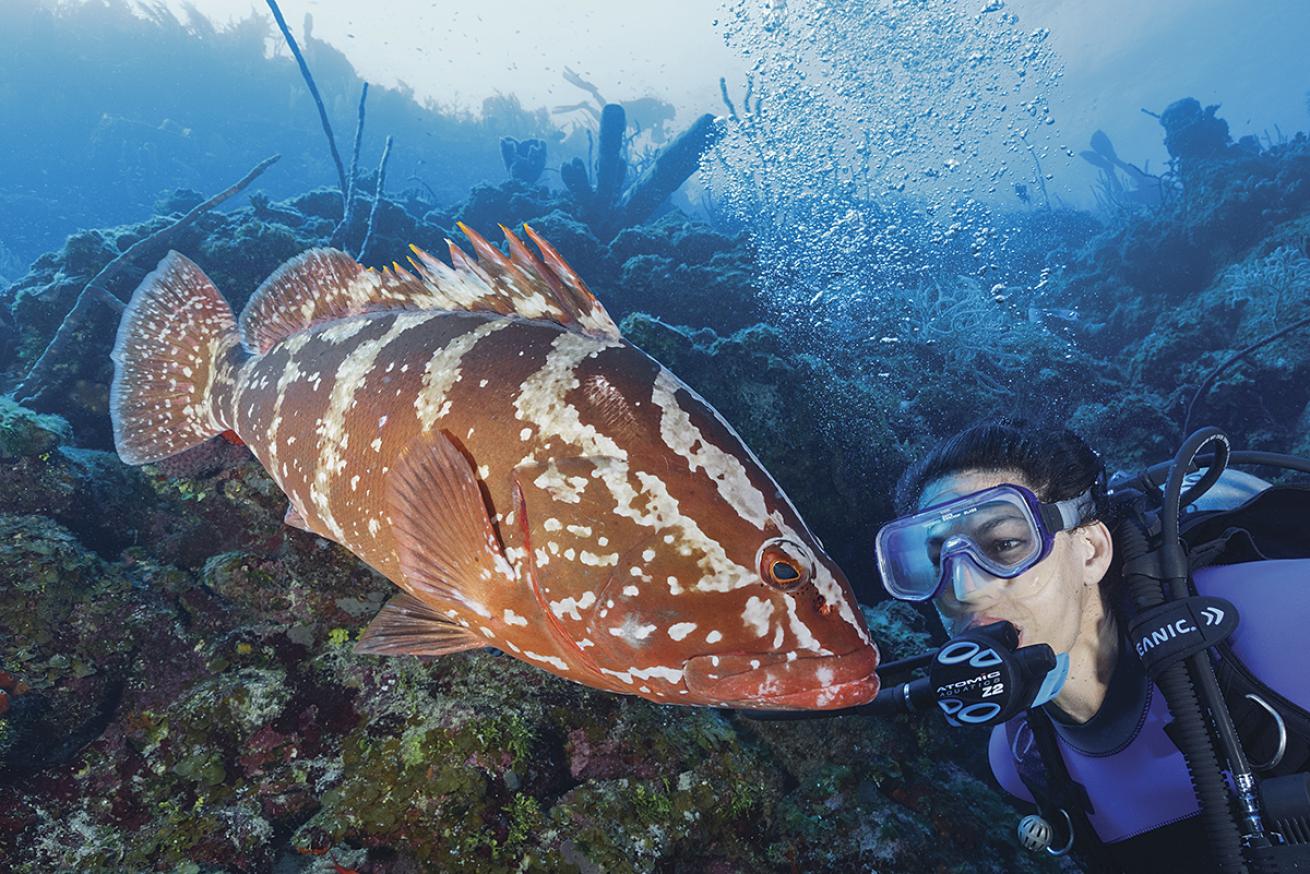
Brandon ColeProtections for nassau groupers in the Cayman Islands during spawning seasons are helping local populations rebound.
Found throughout the Caribbean, southern Florida and Bermuda, Nassau groupers can weigh as much as 55 pounds. They suck whatever prey fits whole into their gaping maw and can darken or lighten their color based on their mood and surroundings. The species recently had its status changed from vulnerable to critically endangered by the International Union for Conservation of Nature (IUCN), mainly because of overfishing and loss of coral reef habitat.
Groupers spawn in spectacular aggregations throughout the Caribbean near full moons December through March, a behavior that makes them popular with divers but also vulnerable to overfishing. Since the Cayman Islands began protecting these aggregations almost two decades ago, numbers have more than tripled. Little Cayman now sees the largest known Nassau grouper aggregation anywhere in the world, with increases from around 1,200 fish in 2009 to more than 7,000 in 2018. Belize protects 13 aggregation sites and closes fishing for grouper during the four spawning months, thanks to the efforts of a partnership of conservation and fisher groups, academic organizations and the Belize Fisheries Department.
The big fish could use more protection, though. “It is fantastic to have laws in place to protect spawning aggregations and months. But outside those months, groupers are fair game,” says scientist Rachel Graham of MarAlliance, a Belize-based NGO. “They are targeted outside of protected times and sites, just hammered the rest of the year, along with poaching during spawning.”
Whale Shark
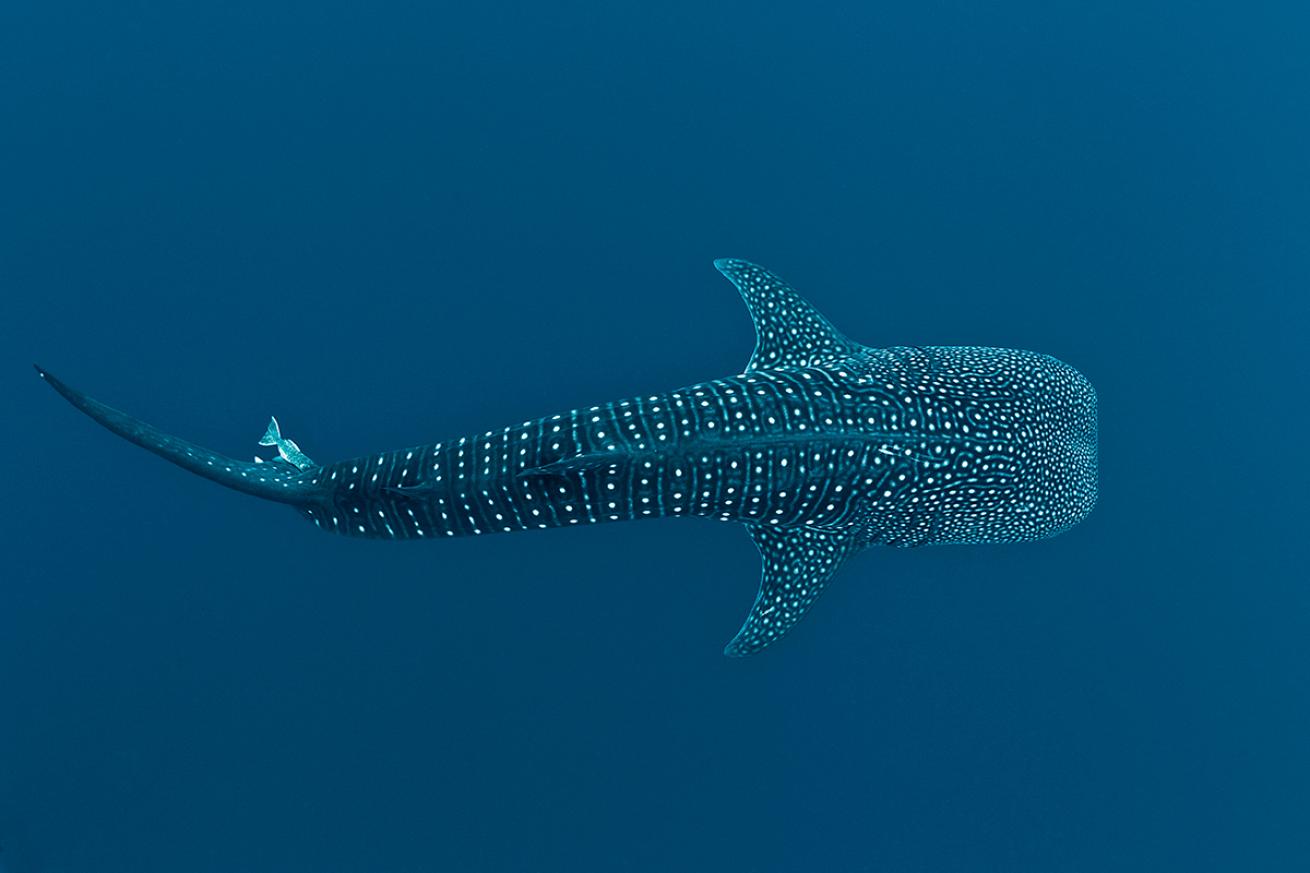
Brandon ColeOvertourism is threatening whale sharks in Mexico.
Whale sharks, the biggest fish in the sea at up to 39 feet and 40 tons, are IUCN Endangered and considered threatened in Mexico. One problem: Tourists are loving them to death, says MarAlliance’s Rachel Graham.
“Whale sharks are one of the most magnificent wild creatures that people can see without a lot of hard work,” Graham says. “We have best practices for viewing them, but the biggest problem we see is the guidelines are not law and so have no teeth. Operators disregard limits and just try to get as many people and boats in as possible. It can be a complete jamboree out there.” She urges people to go whale shark watching in smaller communities off the beaten track. “It may not be the most predictable, but you get an incredible experience, your money goes further and you do less harm.”
Besides tourists behaving badly, threats include shark finning and ship traffic, as the plankton-eating behemoths often feed near the surface.
Scientists have been unsure how long whale sharks live until recently. Nuclear bomb tests in the 1950s and ’60s doubled the amount of an isotope called carbon-14 in the atmosphere; over time, every living thing on the planet absorbed it. Using the known rate at which carbon-14 decays and the amount of it found in vertebral bones, researchers calculated the age of one whale shark at 35 years and another at 50, the oldest known of its kind.
More Marine Conservation:

